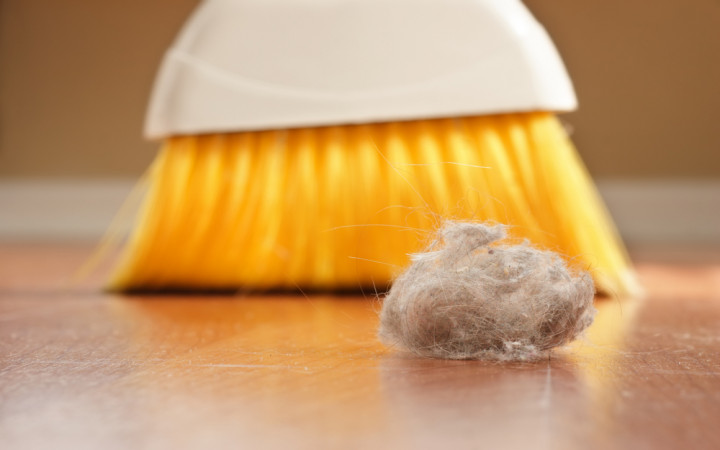You've probably seen them hiding under beds or lurking around floorboards. They're furry and quiet, but they don't eat carrots. What are they? Dust bunnies, of course!
Why are they called "dust bunnies"? No one knows for sure, but it might have something to do with the fact that they're fluffy, quiet and tend to multiply rapidly!
Usually hanging out under furniture or other areas that are hard to reach with a vacuum, broom or duster, dust bunnies are balls of dust and other materials that tend to be held together with static electricity. If static charges build up, dust bunnies can become attracted to each other, resulting in large “super" dust bunnies!
But what exactly is dust? In the air, dust consists of tiny particles of soil lifted by the wind, as well as particles of pollution and microscopic debris from volcanic eruptions around the world.
In your home, atmospheric dust combines with plant pollen, animal hair, human hair and dead skin, clothing fibers and other tiny particles to form dust bunnies when static electricity binds these items together.
Although you might think that dust bunnies — other than being dirty — are mainly harmless, they actually can cause a variety of problems. If they find their way into or around electronics, they can clog vents and cause overheating. They can also clog vacuums and air vents if they get too large.
More troublesome, though, is their potential effect on your health. The organic matter found in dust bunnies, such as human and animal hair and dead skin, is the perfect source of “food" for house-dust mites.
House-dust mites exist in all climates, even at high altitudes. One gram of dust can house almost 200 house-dust mites. Unfortunately, house-dust mites produce allergens that can trigger asthma and contribute to a variety of respiratory problems.
So how do you get rid of house-dust mites? Clean!
Regular dusting and vacuuming, as well as cleaning soft materials like pillows and bedding, can substantially reduce the population of house-dust mites and thereby reduce their negative health effects.




